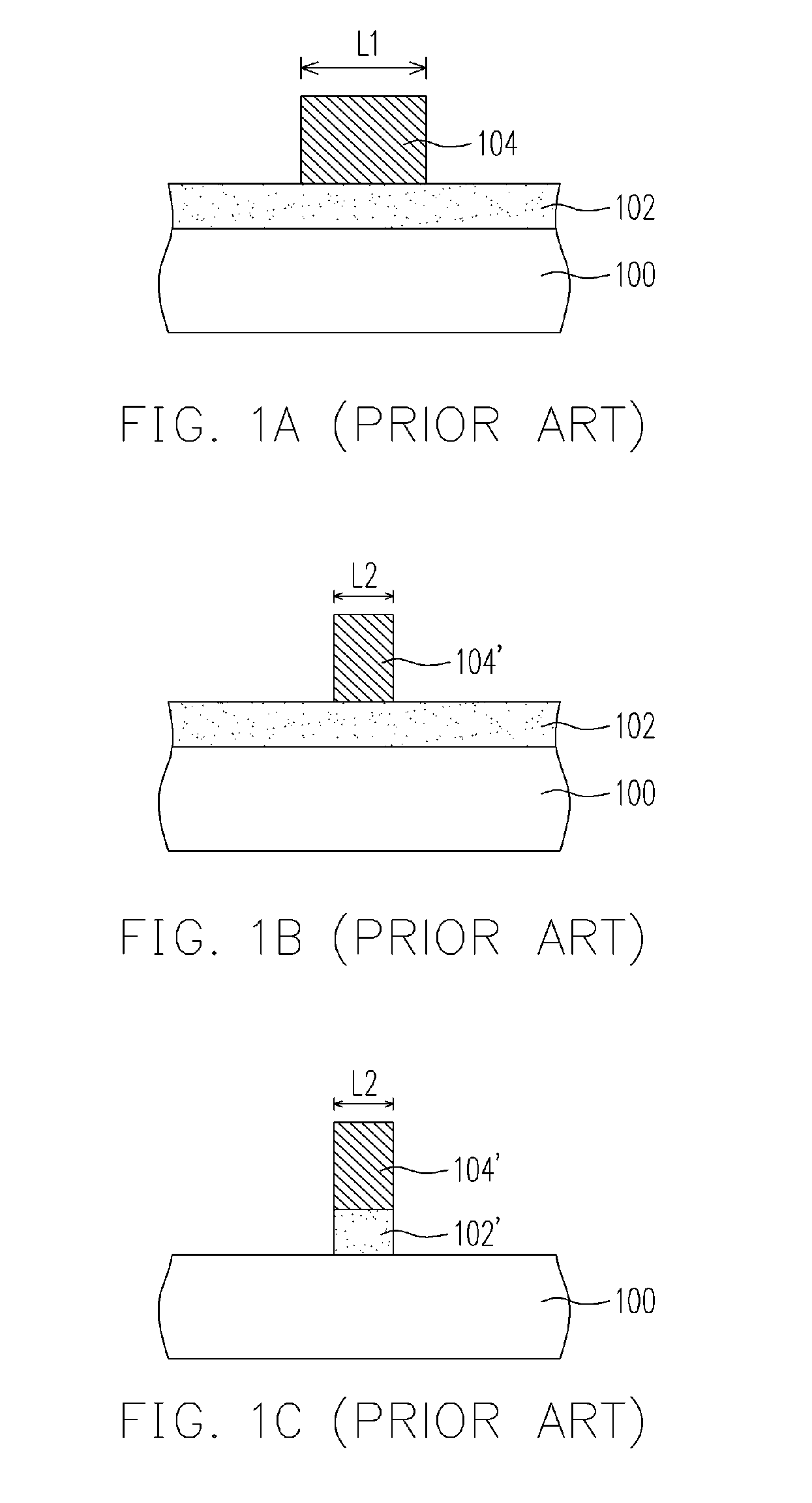Method for reducing critical dimension and semiconductor etching method
a critical dimension and semiconductor technology, applied in the field of semiconductor etching, can solve the problems of inability to use a further miniaturization device, inability unstable photoresist trimming process, so as to reduce the critical dimension, improve the process stability, and uniformize the critical dimension
- Summary
- Abstract
- Description
- Claims
- Application Information
AI Technical Summary
Benefits of technology
Problems solved by technology
Method used
Image
Examples
Embodiment Construction
[0029]FIGS. 2A through 2B are schematic cross-sectional views showing the steps of a method for reducing the critical dimension according to one embodiment of the present invention. According to FIG. 2A, a dielectric layer 202 is formed on a substrate 200, wherein the material of the dielectric layer includes, but not limited to, silicon oxide, silicon nitride or silicon oxynitride. A patterned photoresist layer 204 is formed on the dielectric layer 202, wherein the patterned photoresist layer 204 exposes a part of the dielectric layer 202. The patterned photoresist layer 204 further includes a first line width L1.
[0030] Referring to FIG. 2B, using a patterned photoresist layer 204 as an etching mask, an etching is performed under a pressure of about 80 to 400 torrs and at a temperature between −50° C. to 50° C. The exposed dielectric layer 202 is removed, and a downsized patterned photoresist layer 204′ and a patterned dielectric layer 202′ with a final line width L2 less than the...
PUM
| Property | Measurement | Unit |
|---|---|---|
| Temperature | aaaaa | aaaaa |
| Temperature | aaaaa | aaaaa |
| Pressure | aaaaa | aaaaa |
Abstract
Description
Claims
Application Information
 Login to View More
Login to View More - R&D
- Intellectual Property
- Life Sciences
- Materials
- Tech Scout
- Unparalleled Data Quality
- Higher Quality Content
- 60% Fewer Hallucinations
Browse by: Latest US Patents, China's latest patents, Technical Efficacy Thesaurus, Application Domain, Technology Topic, Popular Technical Reports.
© 2025 PatSnap. All rights reserved.Legal|Privacy policy|Modern Slavery Act Transparency Statement|Sitemap|About US| Contact US: help@patsnap.com



